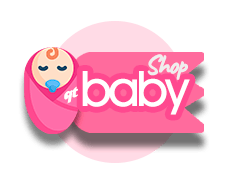[ad_1]

Swaddling is the practice of wrapping a baby snuggly with a blanket or swaddle wrap. New parents have probably heard about the numerous benefits of swaddling. For newborns, swaddling is a common practice that is used for soothing and to promote sleep. Swaddling is an effective practice to help calm babies because it mimics the position and feeling of being in the womb. This practice can ease a newborn’s transition to the outside world in the weeks following birth. There are several important things to consider when we think about swaddling and safe sleep.
First, swaddling should only be practiced until your baby shows signs of rolling. This is why the general recommendation is to stop swaddling around 8 weeks of age, or sooner if the baby begins to show signs of rolling. Always place your baby on their back to sleep, even after the baby is able to roll. Second, breathable fabric is essential for swaddle wraps or blankets. Overheating is a risk factor for SIDS, therefore we want to ensure that babies are dressed and swaddled in fabrics that will not cause overheating. This is also why we recommend that the temperature in the baby’s room be kept between 68-72 degrees fahrenheit. Third, the position of your baby’s arms and the tightness of the swaddle should be considered when practicing swaddling. The general recommendation is to allow the swaddle to be loose enough around your baby’s hips to allow for leg and hip movement so as to prevent any risk of hip dsyplasia, which can occur when the ball and socket joint in the hips is not formed correctly. Therefore, it is important to allow the swaddle to be looser at the hips while being more snug around the torso of the baby.
Many wearable blankets can support the practice of swaddling with a design that combines the ability to swaddle while using the wearable blanket. Using a wearable blanket from birth helps new parents begin to establish a consistent sleep time routine. According to the American Academy of Pediatrics, “Infant sleep clothing, such as a wearable blanket or sleep sack, is preferred over blankets and other coverings to keep a baby warm.” When using the Owlet Sleeper with Swaddle, there are several ways to swaddle your baby:
1. Swaddle with elbows bent and hands up to give Baby access to their hands. This method of swaddling helps to promote self-soothing skills, like sucking on their hands. This position is similar to many baby’s in utero position, so it helps to mimic the womb.

2. Swaddle with both arms in at Baby’s sides. This swaddling method is traditional, used by many hospitals and medical providers. It works well to help Baby feel secure, calms their startle reflex, and helps Baby sleep.

3. Swaddle with one arm bent at the elbow and tucked in, and one arm out. This method is good for babies that don’t love being swaddled because it provides some of the benefits of swaddling while also allowing Baby to have one arm free.

4. Swaddle around Baby’s torso with both arms free. This method is primarily used when parents are transitioning Baby away from being swaddled. It helps to provide some extra security for Baby while allowing their arms to be free as Baby transitions to sleep without a swaddle.

Some babies (and parents) will have difficulty with sleep once it becomes time to stop swaddling. The transition out of a swaddle can be supported through the use of a wearable blanket because it still keeps the baby encased within a soft and cozy environment. The startle reflex is usually beginning to decrease by the time we stop swaddling, but it may still cause some sleep disruption in babies. A wearable blanket gives the baby the ability to have their arms outside of the sack with a design that supports movement of the arms. Having the arms free also helps with temperature regulation so that the baby does not overheat while sleeping. A wearable blanket can be used throughout the baby’s first year and beyond as a safe alternative to loose blankets.
Swaddling can be a great way to support your baby’s transition after birth. In the early days after birth, continue to hold your baby close for comfort and practice swaddling at sleep time as a way to support your baby’s development of healthy sleep habits. Continue to follow the recommendations for safe sleep, often referred to as the ABC’s of safe sleep: Place your baby Alone in their own sleep space, on their Back, and in a Crib (or bassinet). Using a wearable blanket like the Owlet Sleeper with Swaddle in the early days after birth can help with the development of a consistent sleep routine while also following the guidelines that promote safer sleep.
[ad_2]
Source link










